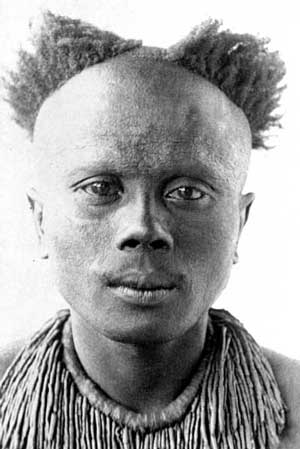History
The indigenous peoples of the Andaman Islands have lived there for thousands of years. Although the existence of the islands and their inhabitants was long known to maritime powers and traders of the South– and Southeast–Asia region, contact with these peoples was highly sporadic and very often hostile. As a result, almost nothing is recorded of them or their languages until the mid-18th century.
By the late 18th century, when the British first established a colonial presence on the Andaman Islands, there were an estimated 5,000 Great Andamanese living on Great Andaman and surrounding islands, comprising 10 distinct tribes with distinct but closely related languages.
From the 1860s onwards, the British established a penal colony on the islands, which led to the subsequent arrival of mainland settlers and indentured labourers, mainly from the Indian subcontinent. This coincided with the massive population reduction of the Andamanese due to outside diseases.
One of the first accounts in English of the languages was by the early phonetician Alexander John Ellis, who presented to the Philological Society on the South Andamanese languages on his retirement. This presentation was later adapted into a Report of Researches into the Language of the South Andaman Island. [10]
By the beginning of the 20th century most of these populations were greatly reduced in numbers, and the various linguistic and tribal divisions among the Great Andamanese effectively ceased to exist, despite a census of the time still classifying the groups as separate. [11] Their linguistic diversity also suffered as the surviving populations intermingled with one another, and some also intermarried with Karen (Burmese) and Indian settlers.

By the latter part of the 20th century, the majority of Great Andamanese languages had become extinct.
At the start of the 21st century only about 50 or so individuals of Great Andamanese descent remained, resettled to a single small island (Strait I.). About half of these individuals speak what may be considered a modified version (or creole) of Great Andamanese, based mainly on Aka-Jeru. [2] This modified version has been called "Present Great Andamanese" by some scholars, [12] [13] but also may be referred to simply as "Jero" or "Great Andamanese". Hindi increasingly serves as their primary language, and is the only language for around half of them. [3]
The Ongan languages survive mainly because of the greater isolation of the peoples who speak them. This isolation has been reinforced by an outright hostility towards outsiders and extreme reluctance to engage in contact with them by South Andamanese tribes, particularly the Sentinelese and Jarawa. The Sentinelese have been so resistant that their language remains entirely unknown to outsiders.








